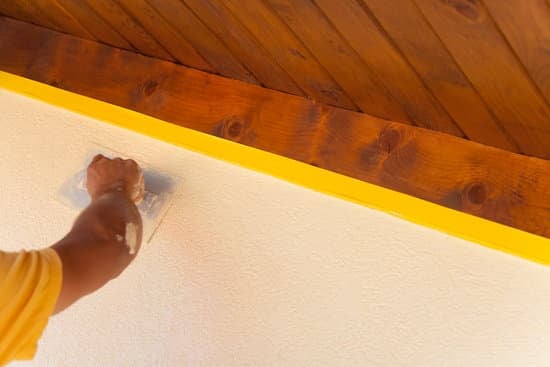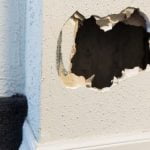Are you looking to reduce your carbon footprint and save money on energy costs in your home? One way to do so is by making energy efficient home improvements. These improvements not only help the environment but can also qualify you for a tax credit. In this article, we will explore how to claim the Energy Efficient Home Improvement Credit, including eligibility requirements, documentation needed, and the step-by-step process for claiming the credit.
The Energy Efficient Home Improvement Credit is a tax incentive offered by the government to encourage homeowners to make energy-efficient upgrades to their homes. This credit is designed to reward individuals who invest in energy-saving improvements by providing them with a financial incentive come tax season. Understanding this credit and its benefits can help you make informed decisions about improving the energy efficiency of your home.
In order to claim the Energy Efficient Home Improvement Credit, there are specific eligibility requirements that must be met. These requirements include the types of improvements made, the date they were completed, and whether they meet certain EPA standards. By understanding these requirements, you can determine whether you qualify for this valuable tax credit.
Understanding the Energy Efficient Home Improvement Tax Credit
The Energy Efficient Home Improvement Tax Credit is a valuable benefit available to homeowners who make energy-saving improvements to their homes. This credit allows qualified taxpayers to claim up to 10% of the cost of eligible energy-efficient home improvements, up to a maximum of $500. It’s important for homeowners to understand the requirements and procedures for claiming this credit in order to maximize its benefits.
To be eligible for the Energy Efficient Home Improvement Tax Credit, homeowners must ensure that the improvements they make meet the energy efficiency requirements set by the government. This includes installing energy-efficient windows and doors, insulation, roofing, heating and cooling systems, water heaters, and other qualifying products. Additionally, these improvements must be made to the taxpayer’s primary residence situated in the United States.
When claiming the Energy Efficient Home Improvement Tax Credit, it’s crucial for homeowners to keep detailed records and documentation of their home improvements and associated costs. This includes retaining receipts, manufacturer certifications, energy efficiency ratings, and any other relevant documents that serve as proof of the qualifying expenditures. Without proper documentation, taxpayers may face challenges when filing for this credit with the IRS or during any potential audits.
Here are some common mistakes that homeowners should avoid when claiming the Energy Efficient Home Improvement Tax Credit:
Failing to Include All Eligible Expenses in Their Claim
Misunderstanding or Misinterpreting Eligibility Requirements
Not Maintaining Accurate Records and Documentation
Furthermore, it is recommended that homeowners seek professional assistance from tax experts or financial advisors who can provide guidance on how to claim energy efficient home improvement credit successfully. By understanding these key aspects of claiming this tax credit and following the necessary steps, homeowners can take full advantage of its benefits while contributing to a more energy-efficient future for their homes.
| Energy-Efficient Home Improvements | Maximum Credit Amount |
|---|---|
| Windows and Doors | $200 |
| Roofing | $150-500 (depending on material) |
| Heating and Cooling Systems | $300 |
Eligibility Requirements for Claiming the Energy Efficient Home Improvement Credit
The Energy Efficient Home Improvement Credit is a tax incentive offered to homeowners who make qualified energy-saving improvements to their homes. To be eligible for this credit, you must meet certain requirements set by the Internal Revenue Service (IRS) in the United States.
Eligibility Requirements
To qualify for the Energy Efficient Home Improvement Credit, you must meet the following eligibility requirements:
- Your home must be located in the United States and used as your primary residence.
- The energy-efficient improvements must have been made to an existing home, not a new construction.
- The improvements must meet the energy efficiency standards set by the IRS.
- You must have documentation proving that the products or materials used for the improvements are certified as energy efficient.
Additionally, it’s important to note that not all energy-saving home improvements qualify for the credit. The IRS provides a list of eligible improvements on their website, including items such as solar panels, energy-efficient windows and doors, insulation, and certain heating and cooling systems. It’s essential to review this list before making any improvements to ensure they meet the criteria for the credit.
Proof of Eligibility
In order to claim the Energy Efficient Home Improvement Credit, you will need to provide documentation and proof of your eligibility when filing your taxes. This may include:
- Receipts or invoices for the purchase of energy-efficient products or materials
- Certifications or labels indicating that the products meet energy efficiency standards
It is important to keep thorough records of your home improvement expenses and documentation of product certifications in case you are audited by the IRS. By ensuring that you have all necessary proof of eligibility when claiming the credit, you can avoid potential issues with your tax return related to this credit.
Required Documentation and Proof for Claiming the Credit
In order to claim the Energy Efficient Home Improvement Credit, you will need to provide certain documentation and proof of the energy efficient improvements you have made to your home. This is essential in order to ensure that you are eligible for the credit and that your claim is processed smoothly.
One of the key documents you will need is a receipt or invoice from the contractor who performed the energy efficient improvements. This should outline the work that was done, including details of any energy efficient materials or products that were used. Additionally, you will also need to provide proof of payment for these improvements in the form of canceled checks or credit card statements.
Another important piece of documentation is a Manufacturer’s Certification Statement for any energy efficient products that were installed as part of the improvement project. This statement confirms that the products meet the energy efficiency requirements set by the government and are therefore eligible for the tax credit. You should keep this statement on file in case it is requested by the IRS.
Lastly, it’s crucial to retain any other relevant documentation such as product labels, ENERGY STAR certifications, or any other third-party verification of energy efficiency. These documents can serve as further evidence of your eligibility for the credit and may be required if your claim is audited by the IRS.
| Documentation | Proof |
|---|---|
| Receipts/invoices from contractor | Canceled checks/credit card statements |
| Manufacturer’s Certification Statement | On file in case requested by IRS |
By gathering and keeping all necessary documentation and proof, you can ensure that your claim for the Energy Efficient Home Improvement Credit is accurate and well-supported.
Step-by-Step Process for Claiming the Energy Efficient Home Improvement Credit
Energy Efficient Home Improvement Credit can provide homeowners with substantial tax benefits for making energy efficient upgrades to their homes. Once you have completed the necessary upgrades, it is important to understand the step-by-step process for claiming the credit.
Understand IRS Form 5695
The first step in claiming the Energy Efficient Home Improvement Credit is to familiarize yourself with IRS Form 5695. This form is used to calculate the residential energy property credit, which includes credits for solar electric property, solar water heating property, small wind energy property, geothermal heat pump property, and fuel cell property. You will need to complete this form and include it with your tax return in order to claim the credit.
Gather Documentation and Receipts
Next, gather all documentation and receipts related to the energy efficient improvements you made to your home. This may include receipts for purchases of energy efficient windows, doors, insulation, HVAC systems, or other qualifying items. It is important to keep detailed records of these purchases as well as any installation costs in order to support your claim for the credit.
Claiming the Credit on Your Tax Return
When preparing your tax return, make sure to accurately report the information from Form 5695 and any other supporting documentation related to your energy efficient home improvements. Double-check all calculations and ensure that you are claiming the correct amount of credit based on the eligible improvements you made.
By following these steps and properly documenting your energy efficient home improvements, you can successfully claim the Energy Efficient Home Improvement Credit and maximize your tax benefits while contributing to a more sustainable living environment.
It is essential to ensure that you follow all guidelines provided by the IRS in order not miss out on potential benefits for making environmentally friendly home upgrades.
Common Mistakes to Avoid When Claiming the Credit
When it comes to claiming the Energy Efficient Home Improvement Credit, there are some common mistakes that taxpayers should be aware of in order to avoid potential issues or delays in receiving the credit.
One of the most common mistakes is failing to keep accurate and detailed records of the home improvement projects. It is important to maintain documentation such as receipts, invoices, and product specifications for any energy efficient upgrades made to the home. Without proper documentation, it may be difficult to prove eligibility for the credit and could result in a denied claim.
Another mistake to avoid is claiming non-qualifying expenses for the credit. Not all energy efficient home improvements are eligible for the tax credit, so it is crucial to thoroughly research which upgrades qualify before making a claim. For example, certain energy efficient appliances or renewable energy systems may be eligible, while other improvements such as landscaping or swimming pool enhancements would not qualify.
Lastly, procrastinating on claiming the credit can result in missed opportunities. Taxpayers should be mindful of deadlines for claiming the Energy Efficient Home Improvement Credit and ensure that all necessary documentation and forms are submitted in a timely manner. Waiting until the last minute may lead to errors or oversights that could jeopardize eligibility for the credit.
By avoiding these common mistakes and following proper procedures for claiming the Energy Efficient Home Improvement Credit, taxpayers can maximize their potential benefits and contribute to a more sustainable and energy-efficient home environment.
Tips for Maximizing Your Energy Efficient Home Improvement Credit
Making energy-efficient home improvements not only reduces your carbon footprint but can also save you money in the long run. There are several tips and strategies that can help you maximize your energy-efficient home improvement credit, allowing you to take full advantage of the tax benefits available.
Plan Your Projects Carefully
Before starting any home improvement projects, it’s essential to plan carefully and prioritize the upgrades that will have the most significant impact on your home’s energy efficiency. Consider consulting with a professional to assess your home’s energy use and identify areas where improvements can be made.
Take Advantage of Tax Credits
In addition to the Energy Efficient Home Improvement Credit, there may be other tax credits and incentives available for specific upgrades, such as installing solar panels or upgrading to energy-efficient windows and doors. Research all potential credits and take full advantage of those that apply to your home improvement projects.
Use High-Quality Products
When making energy-efficient upgrades, it’s important to invest in high-quality products that meet or exceed energy efficiency standards. Not only will these products provide better performance, but they are also more likely to qualify for tax credits. Be sure to keep track of all receipts and documentation for these products as they will be necessary when claiming the credit.
By following these tips and utilizing all available resources, homeowners can make the most of their energy-efficient home improvement credit and enjoy both environmental and financial benefits.
Additional Benefits of Making Energy Efficient Home Improvements
Making energy efficient home improvements not only provides you with long-term financial savings on energy bills but also offers a variety of additional benefits. Here are some of the advantages of investing in energy efficient upgrades for your home:
- Environmental impact: By reducing your household’s energy consumption, you will lower your carbon footprint and decrease air pollution, contributing to a healthier environment.
- Increased property value: Energy efficient features such as solar panels, high-performance windows, and insulation can enhance the resale value of your home, making it more attractive to potential buyers.
- Comfort and health: Improving insulation and sealing leaks can create a more comfortable indoor environment by maintaining consistent temperatures throughout the year. Additionally, better ventilation and air quality resulting from energy efficient upgrades can promote a healthier living space for you and your family.
In addition to these benefits, many utility companies offer incentives or rebates for energy efficient home improvements. These programs can provide financial assistance or discounts on the cost of purchasing and installing qualified energy-saving products. It’s worth researching the available incentives in your area to maximize your savings on home upgrades.
Lastly, making energy efficient improvements can also result in tax credits or deductions, further reducing the overall cost of the upgrades. By taking advantage of these incentives, you can make your home more energy efficient while simultaneously saving money and contributing to environmental sustainability.
Remember that claiming the Energy Efficient Home Improvement Credit is an excellent way to offset some of the costs associated with these projects. By following the eligibility requirements and documentation guidelines outlined by the IRS, homeowners can benefit from tax credits related to their investments in energy efficiency for their homes.
Resources for Further Information and Assistance With Claiming the Credit
In conclusion, the Energy Efficient Home Improvement Credit offers a great opportunity for homeowners to make their homes more energy efficient while also receiving a tax credit. By understanding the eligibility requirements, required documentation, and step-by-step process for claiming the credit, homeowners can take advantage of this benefit.
To claim the Energy Efficient Home Improvement Credit, it is important to gather all necessary documentation and proof of the energy efficient improvements made to the home. This may include receipts, product labels, and other evidence of the improvements. Additionally, homeowners should be mindful of common mistakes to avoid when claiming the credit, such as not filing the correct forms or missing out on eligible improvements.
Maximizing your energy efficient home improvement credit can also lead to additional benefits beyond just saving on taxes. Making these improvements can result in lower utility bills, increased home value, and a reduced carbon footprint. It’s a win-win situation for both homeowners and the environment.
For further information and assistance with claiming the Energy Efficient Home Improvement Credit, homeowners can consult resources provided by government agencies or seek professional help from tax experts. With careful planning and attention to detail, homeowners can make the most of this valuable tax credit opportunity.
Frequently Asked Questions
How Does the Energy Tax Credit Work?
The Energy Tax Credit is designed to incentivize individuals and businesses to invest in renewable energy sources and improve energy efficiency. Taxpayers can claim a percentage of the cost of qualifying renewable energy systems or energy-efficient home improvements as a credit on their taxes.
Do You Want to File Form 5695 to Claim the Residential Energy Credit?
If you have made eligible energy-efficient upgrades to your home, then filing Form 5695 to claim the residential energy credit may be beneficial for you. This form allows you to calculate the amount of tax credit you are eligible for based on the qualified expenses incurred for making your home more energy efficient.
Is the Energy Efficient Home Improvement Credit a $500 Lifetime Credit?
The Energy Efficient Home Improvement Credit is not a $500 lifetime credit, but it does offer taxpayers up to 10% of the cost of certain energy-saving equipment installed in their homes. The maximum credit available is $500, so it’s important to keep track of your expenses when making these types of improvements.

I’m thrilled to have you here as a part of the Remodeling Top community. This is where my journey as an architect and remodeling enthusiast intersects with your passion for transforming houses into dream homes.





